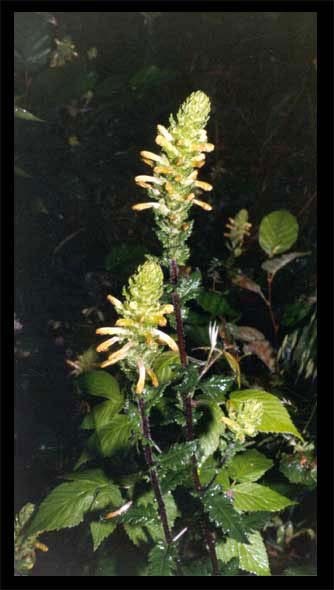
Endangered
- Found only on the Upper Saint John River.

Endangered
Furbish’s lousewort is a rare plant of river shores. It is recognizable as early as May, when it consists of a few, stem-less, fern-like leaves which form a basal rosette (in other words, they appear as a bouquet of leaves protruding from the ground.) Toward mid-summer, mature plants produce one or more flowering stems. These stems have fern-like leaves along their length and are topped by a tight cluster of up to 25 small, yellow-to-brownish individual flowers, which bloom only a few at a time. The plants are often obscured by competing vegetation as their average height is only 75 cm. Furbish’s lousewort takes two to three years to reach maturity. It reproduces by seed. The seedlings have an unusual requirement; their roots link to a nearby host plant in order to obtain nutrients.
Furbish’s lousewort occurs along the exposed shorelines of the Upper Saint John River. Its typical habitat is subject to spring floods and ice flows. These disturbance events reduce competition from shrubs and other plants that could otherwise overgrow and crowd out the lousewort. While some lousewort plants may be lost to disturbance, the species is able to survive by taking advantage of the new habitat represented by bank slumps and shores that have been scoured or scraped by ice. It is unclear how much lousewort habitat may have been lost due to the construction of dams. Current concerns are related to local factors, such as trampling, picking or dumping. Shoreline stewardship, such as leaving tree buffers along banks, is a simple and effective conservation approach for this species. Furbish’s lousewort was the first plant to be designated as endangered nationally (by the Committee on the Status of Endangered Wildlife in Canada, 1980) and provincially (under the New Brunswick Endangered Species Act 1982).
Furbish’s lousewort is endemic to the Upper Saint John River in New Brunswick and northern Maine. This means that it is limited to this geographic area, occurring nowhere else in the world.